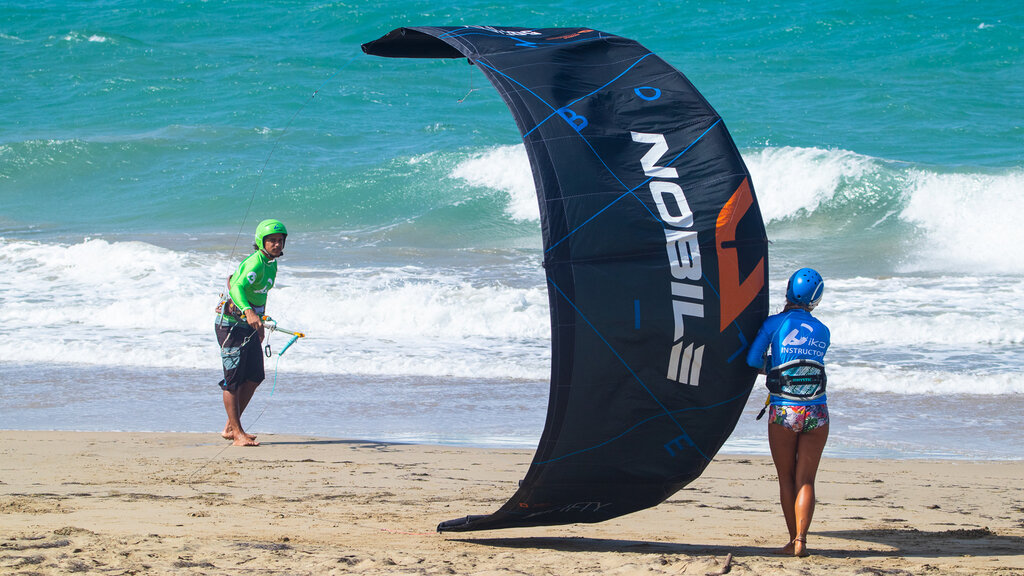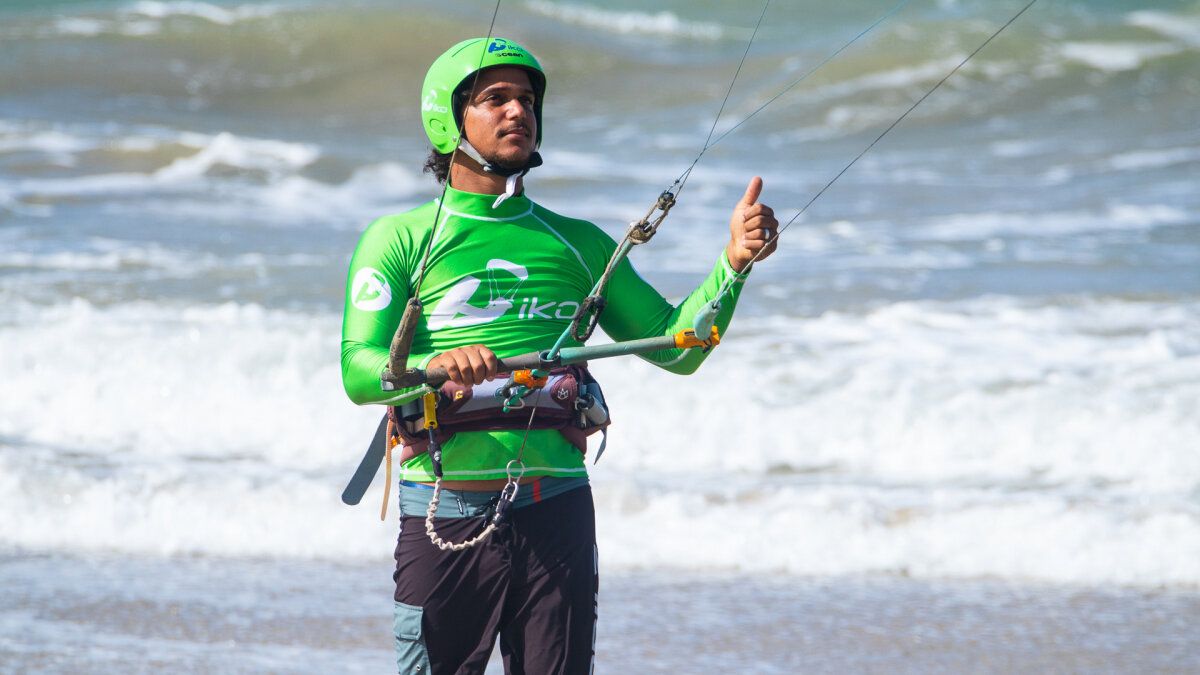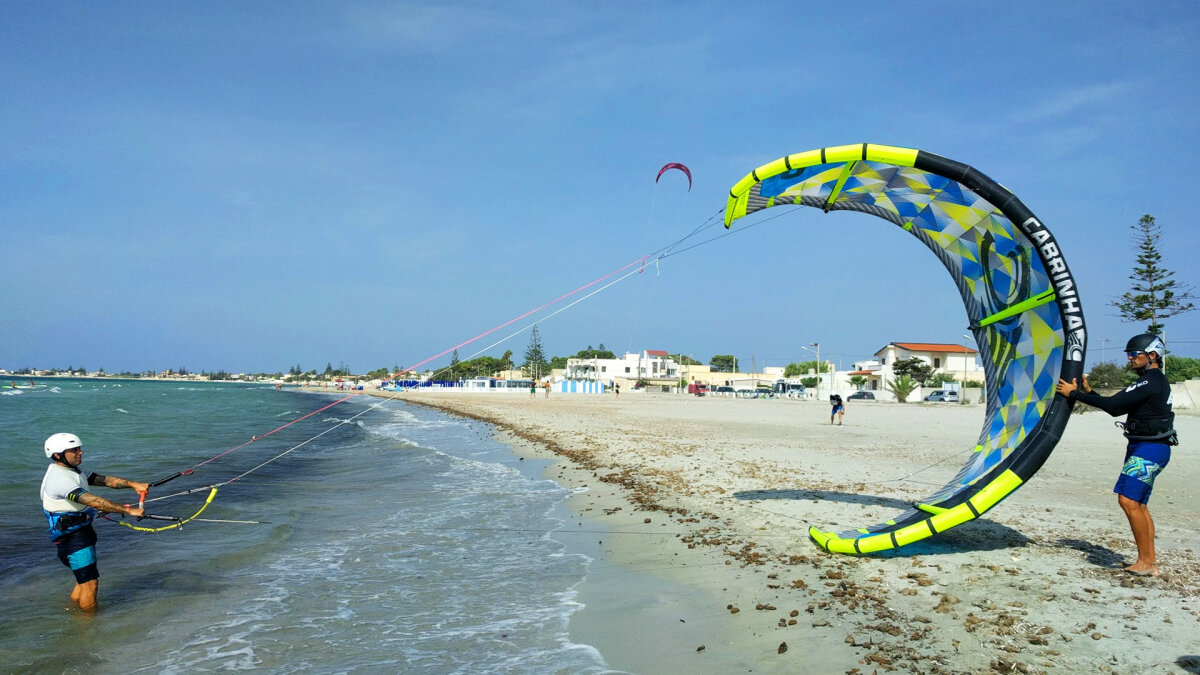Try the new IKO website at https://beta.ikointl.com/

What Safety Equipment Is Required for an IKO Lesson (And Why Should You Care?)
I recall when my dad took his first kite lessons, way back then. I was still a little kid. I laugh about it now, because I remember the difficulties he experienced trying to learn on those old 2-line C kites where you didn’t even have the ability to depower! I don’t blame him for windsurfing for those last couple of seasons before he finally converted to kiting.
Compared to the gear kiteboarders used ten to fifteen years ago, luckily it's a lot safer and easier to get into the sport now. One of the main reasons is that today’s safety equipment is much more developed and refined than it was in earlier days. That was back when kiting was a bit more of an adventurous endeavour, to say the least.
Thanks to the IKO, nowadays, whether you learn at an affiliated Center in Spain, Thailand, the USA or anywhere else in the world, you can rest assured that the gear you will use meets the highest quality and safety standards in the industry.
For example, one of the forefront measures adopted by IKO was to completely ban the use of board leashes and instead, teach the appropriate body-drag technique to recover your board safely and effectively.
In this article, let’s get into what kind of safety gear is required for an IKO kiteboarding lesson and why it’s so important for your enjoyment when learning the sport!
All the Wearable Safety Gear for an IKO Lesson
Let’s first have a look at all the safety equipment you will wear during (and hopefully after) your kiteboarding lessons at any IKO Center.
When you show up for any IKO kite lessons worldwide, you will be required to wear a helmet at all times. This should be pretty self-explanatory, but the use of a helmet when kiteboarding will ensure that your head (and precious brain!) stays protected at all times.
Next, you will receive a personal flotation device (PFD) rated to at least 50 Newtons of buoyancy. You will always be wearing a PFD when in the water (even if it’s shallow). Using a PFD provides multiple benefits: flotation, impact protection, and even a bit of warmth. I personally still use a PFD to this day, as it gives me the extra confidence to push myself and learn new skills on the water!
After your PFD, you then put on a kite harness which allows you to connect to the control bar and the kite. You will also attach a safety leash to the front of the harness, which allows you to activate your safety system with either hand if needed.
Your harness also has a handle on the back for the Instructor to hold on to you, which facilitates teaching in certain scenarios. Even after lessons, it still makes sense to have one just in case you ever need to rescue a fellow kiter in need!
All IKO instructors carry a line cutter in the event that a line gets wrapped and needs to be cut. Most kiters will never have to use a line cutter, but it makes sense to be prepared just in case an unexpected situation comes up.
In addition to all the required safety gear I just mentioned, your IKO Center may give you a wetsuit or a pair of neoprene booties depending on the learning environment to keep you warm and comfortable during your lessons.
From your head all the way down to your feet, you’re set and ready for your lesson! Now, I’ll introduce you to the gear you came here for — the kite!

All About The Kites You Will Be Using When Learning With IKO
When starting out, the kites you use have a massive impact on your learning curve. The kite is perhaps the most critical area where learning through IKO makes a massive difference as opposed to learning at a non-affiliated kiteboarding school.
When first learning to fly a kite, you will initially use a trainer kite. Trainer kites have much shorter lines (5-10 meters) than your standard kite lines (20-25 meters), which dramatically reduces the amount of power they are capable of generating.
The bottom line is that trainer kites should not be capable of generating enough power to unbalance you. I’ve even successfully taught ten-year-olds with trainer kites because they are that much easier to handle!
When first starting, having less power in the kite is both safer and more enjoyable. You will begin with more confidence and therefore, will progress quicker when learning the basics of kite steering and bar sheeting (pushing in and out with the bar).
However, the use of trainer kites is not necessarily a requirement at non-affiliated schools. And trust me, the feeling of being overpowered and out of control, as it happened to my dad in his first lessons, is not a pleasant experience.
An experienced IKO Instructor will help you to learn with the perfect kite that is appropriate for both your experience level and the wind conditions. After you have developed adequate kite control skills, you will then graduate to regular length lines and larger kite sizes so that you can actually get up and ride!

Photo: Kitesurf Mazara Kite School (Italy)
Don't Forget All The Other Stuff You'll Definitely Wish You Had!
In addition to using all the required safety gear and picking the right kite, there are a few more things that can make learning more comfortable for you.
First, it is essential to shield yourself from the sun when out on the water. Make sure you put on plenty of sunscreen or sunblock, as you will be out there for a few hours. Also, consider bringing a hat to be worn under your helmet. You can even consider wearing a face mask too for extra protection.
You might also want to wear sunglasses (ideally polarised) if it's a sunny day because you will be looking up towards your kite a lot when first learning. And make sure they have a retention device, or you may lose them (a definite possibility).
Lastly, remember to drink lots of water before and after your lessons! Dehydration is possible if you forget due to the physical nature of the sport and also due to the general exposure to the elements.
Remembering these little details can make your lessons much more fun and enjoyable.
Beginner Or Pro, The Safety Equipment You Use When Kiting Is Critical!
During lessons, you don't want to spend any time worrying about or dealing with unsafe situations. You want to focus on having fun and developing your kiteboarding skills!
At IKO, we prioritize having the right gear on hand, maintaining that gear to ensure its functionality, and informing you on how to use it. We know from experience that this frees you up to focus 100% on developing your kiteboarding skills, and ensures you will become a safer (and therefore better) kiter!
So what are you waiting for? Sign up for lessons at an IKO center near you and get yourself on the safest path to kiteboarding bliss!
Author: Daniel Plautz
.png)

